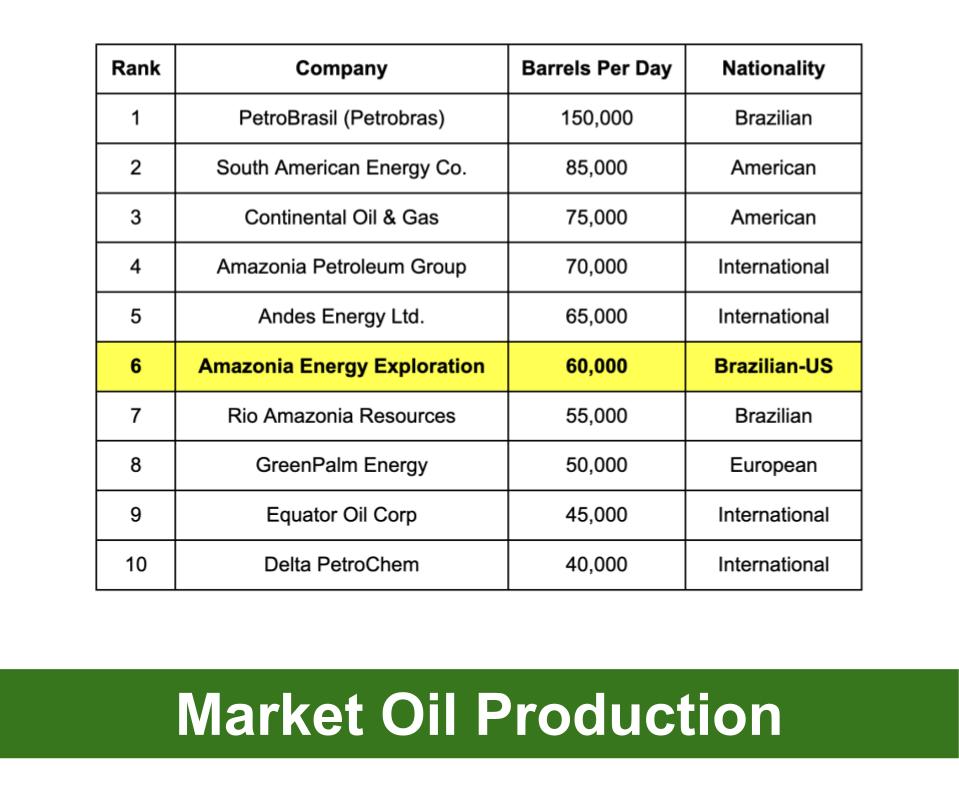*** Emergency Dredging Option Eliminated Below ***
Context
In the wake of the oil spill and public relations crises that your team has been grappling with, the situation has taken a turn for the worse. Shamus O’Brien’s call has confirmed that initial reports of the spill’s magnitude were overly optimistic, and new assessments indicate that the extent of the environmental damage is more severe.
As the oil continues to spread, the sensitive ecosystems of the Amazon Basin are facing unprecedented threats. The spill now poses a significant risk to the diverse ecosystems of the Amazon Basin, including its complex network of freshwater rivers and streams, the floodplain forests known as ‘varzea’, and the extensive, biologically rich rainforests that are home to a vast array of plant and animal species. Immediate and effective containment measures are imperative to mitigate further ecological damage and protect the livelihoods of local communities dependent on these fragile ecosystems.

Task
Select the best oil containment option while considering operational, financial public relations and security factors and concerns.
Options
Discuss and fully consider the options below with your team members.
Use drones equipped with multispectral imaging to monitor the spread of the spill in real-time, allowing for quick deployment of containment measures in key affected areas.
- Advantages: Real-time monitoring; precise deployment of containment measures.
- Disadvantages: Limited to monitoring; requires additional containment methods.
Deploy advanced containment booms designed for riverine environments, which can navigate the Amazon’s complex waterways and can be quickly deployed in critical areas to prevent the spread to tributaries and protected areas.
- Advantages: Quick deployment; adaptability to riverine environments.
- Disadvantages: Potential disruption to wildlife; limited by river currents and debris.
Introduce bio-remediation barriers, which use microorganisms or plants to break down the oil naturally. These barriers can be placed strategically in the path of the oil spill to treat the pollution without adding harmful chemicals to the environment.
- Advantages: Eco-friendly; helps in natural degradation of oil.
- Disadvantages: Slower process; effectiveness varies with oil type and location.
Construct absorbent marshlands using natural, locally sourced materials like coconut husk or bamboo that absorb oil while minimizing ecological disruption. These can be built on the edges of the riverbanks and in areas where the oil is likely to collect.
- Advantages: Environmentally sensitive; aids in oil recovery.
- Disadvantages: Labor-intensive to build; may not be suitable for high-volume spills.
Decision
After carefully assessing all of the options above, as a team choose the best option (select one below) to contain the oil spill while considering operational, financial public relations and security factors and concerns. Your team must wait until there are 2 mins or less remaining before selecting its decision.









